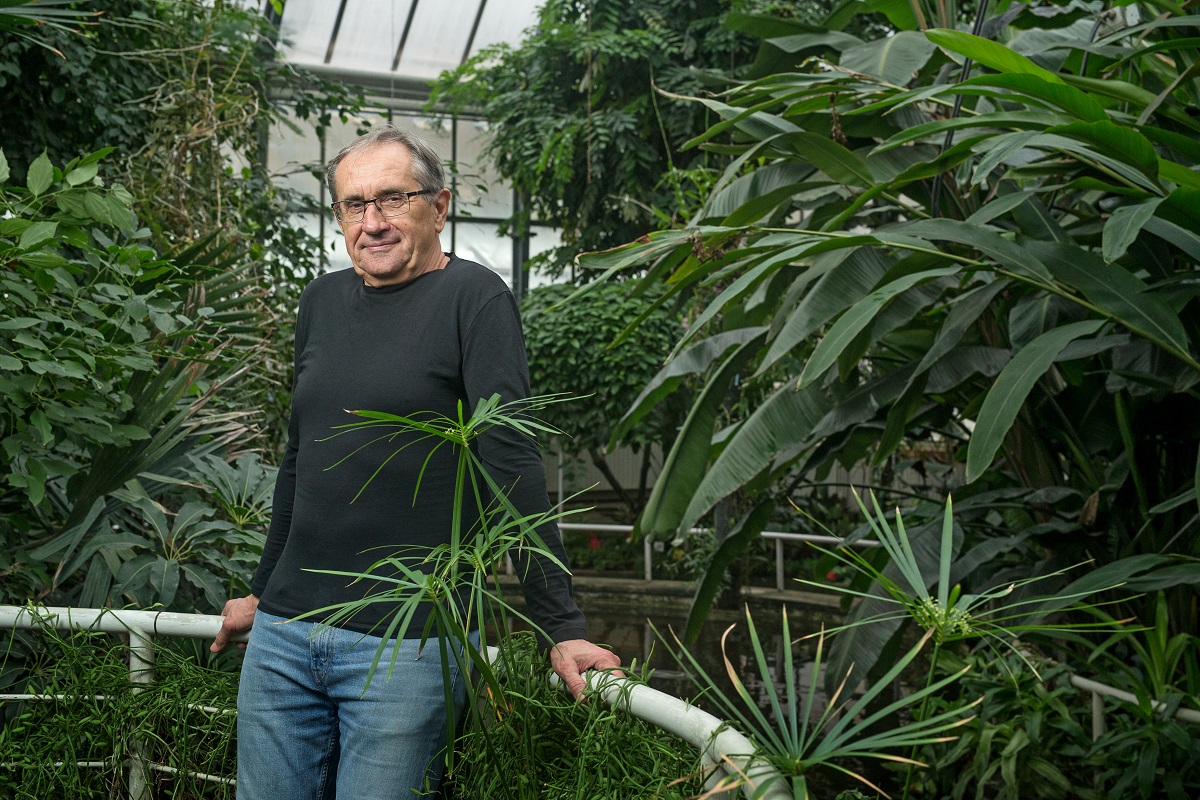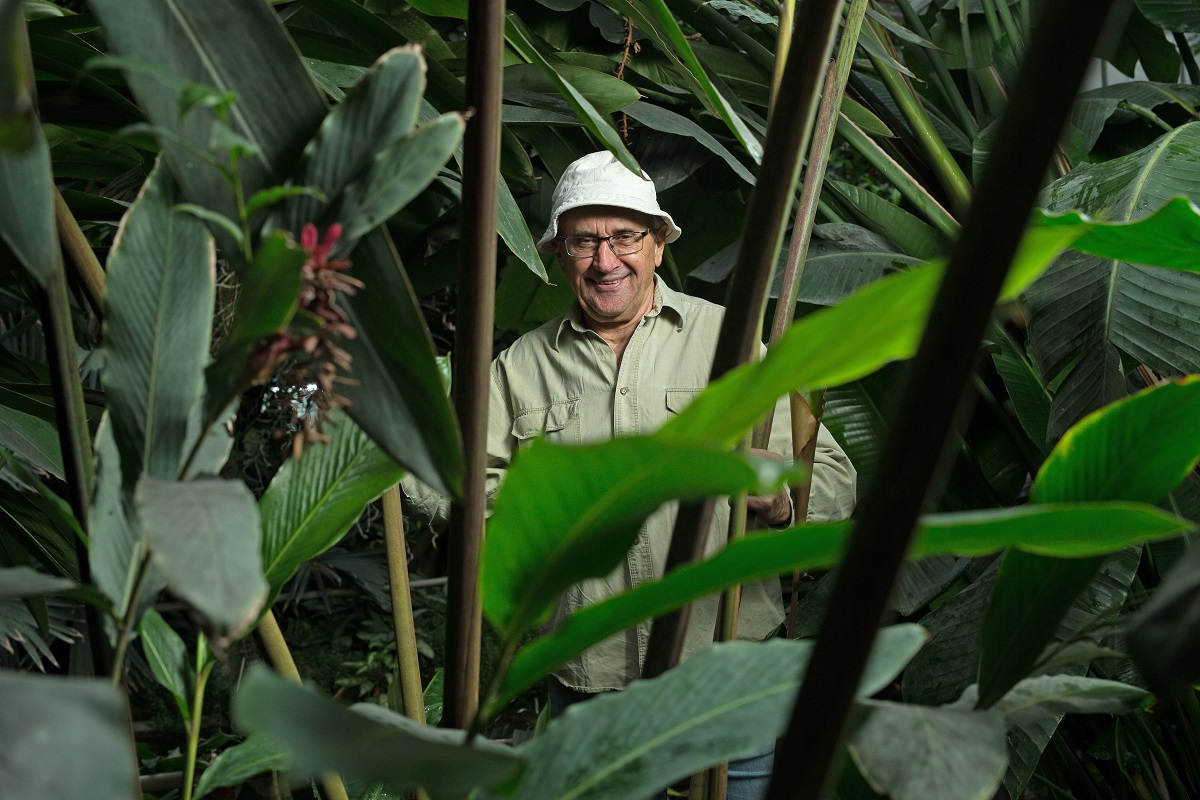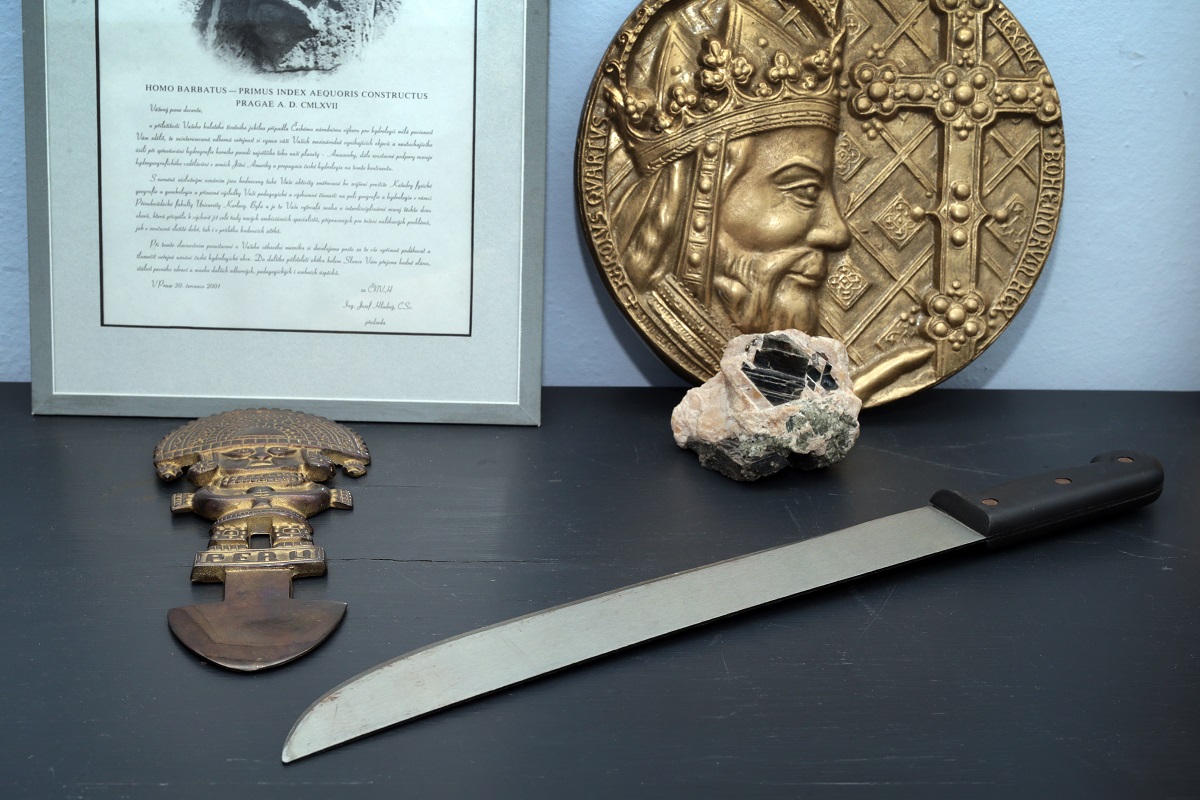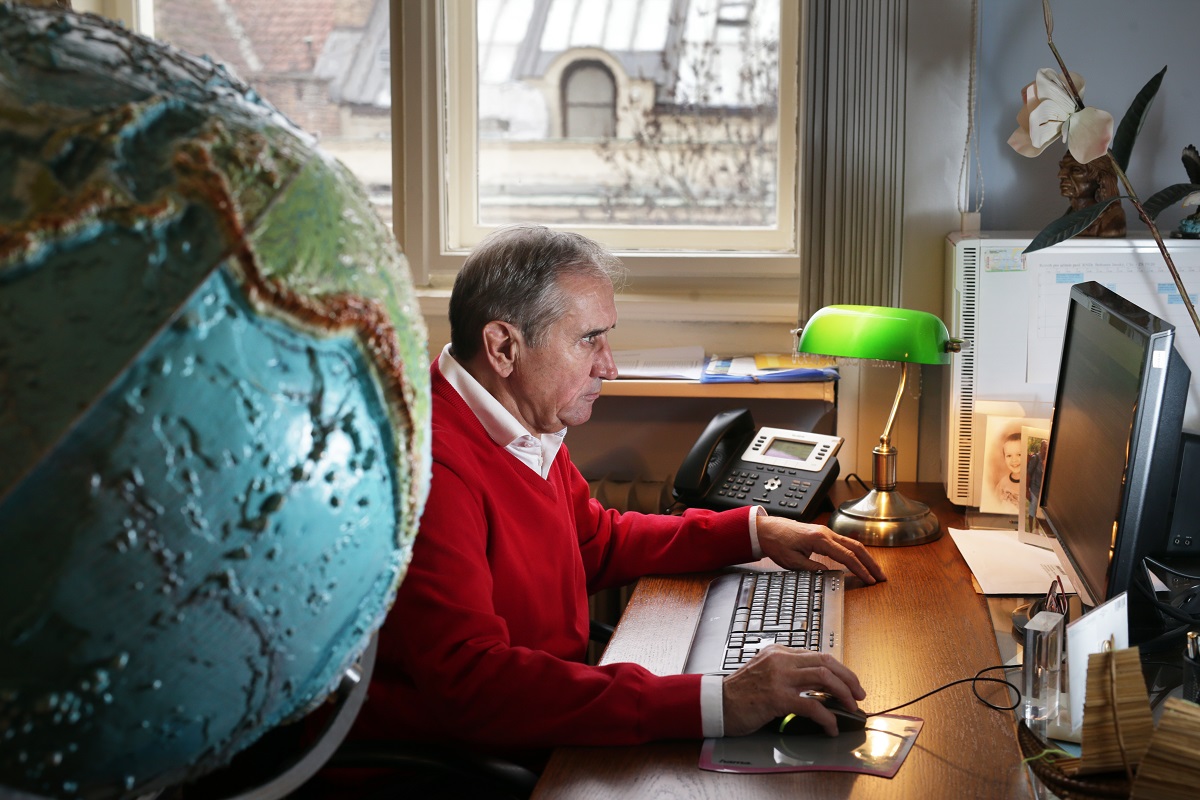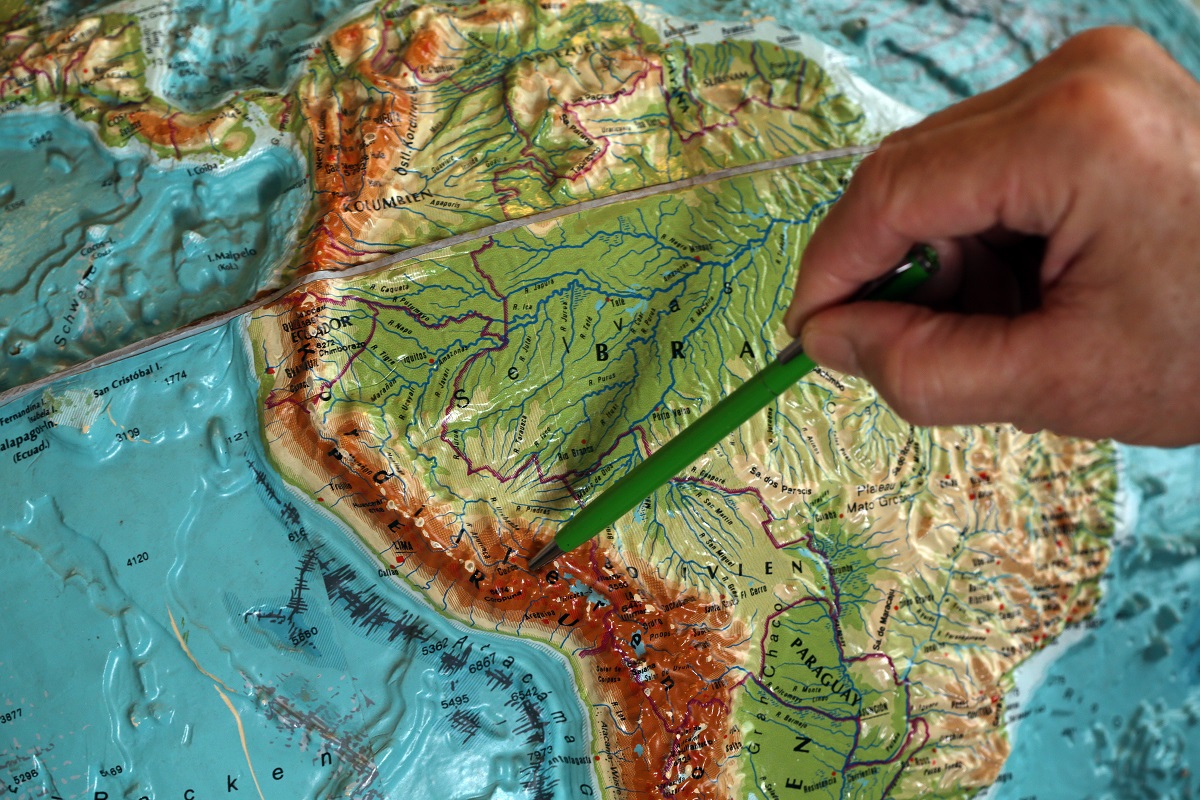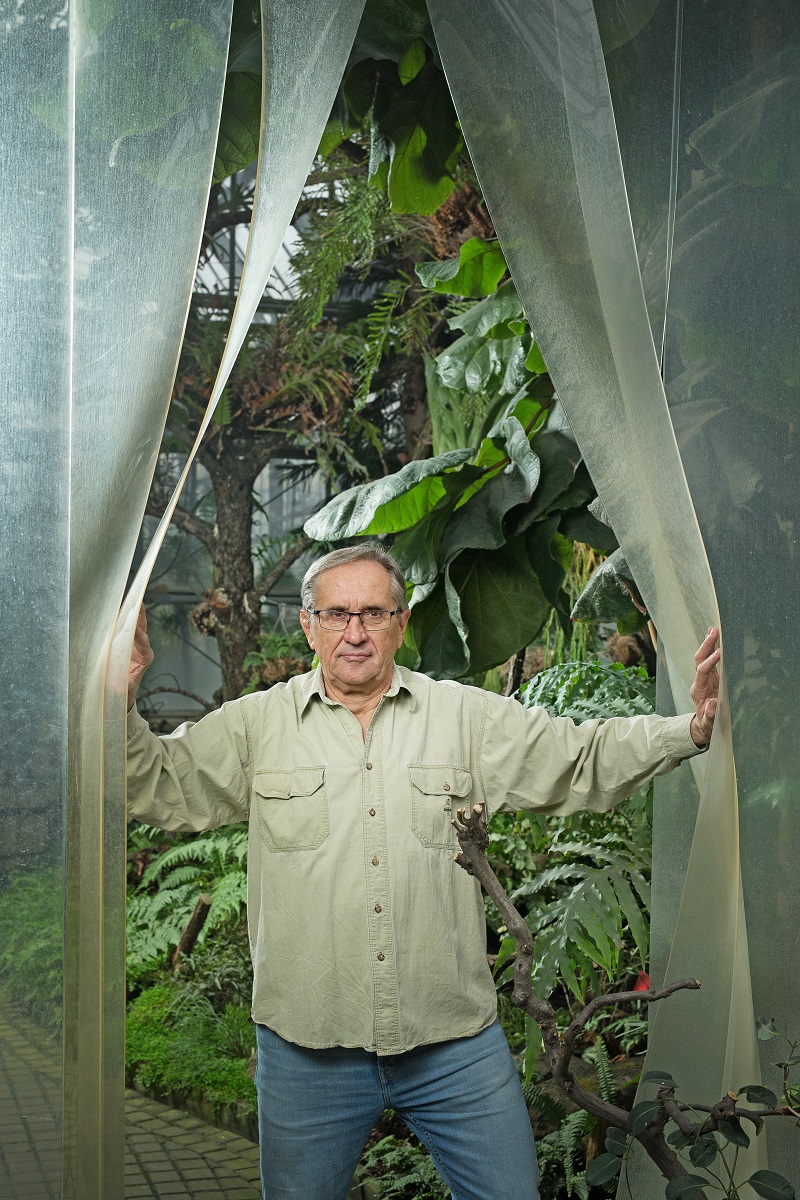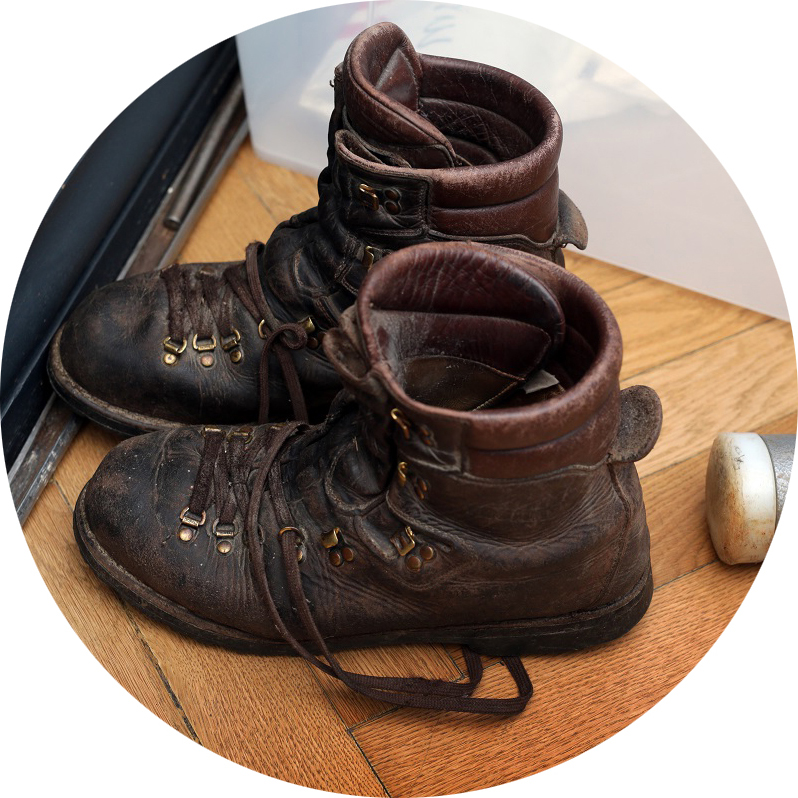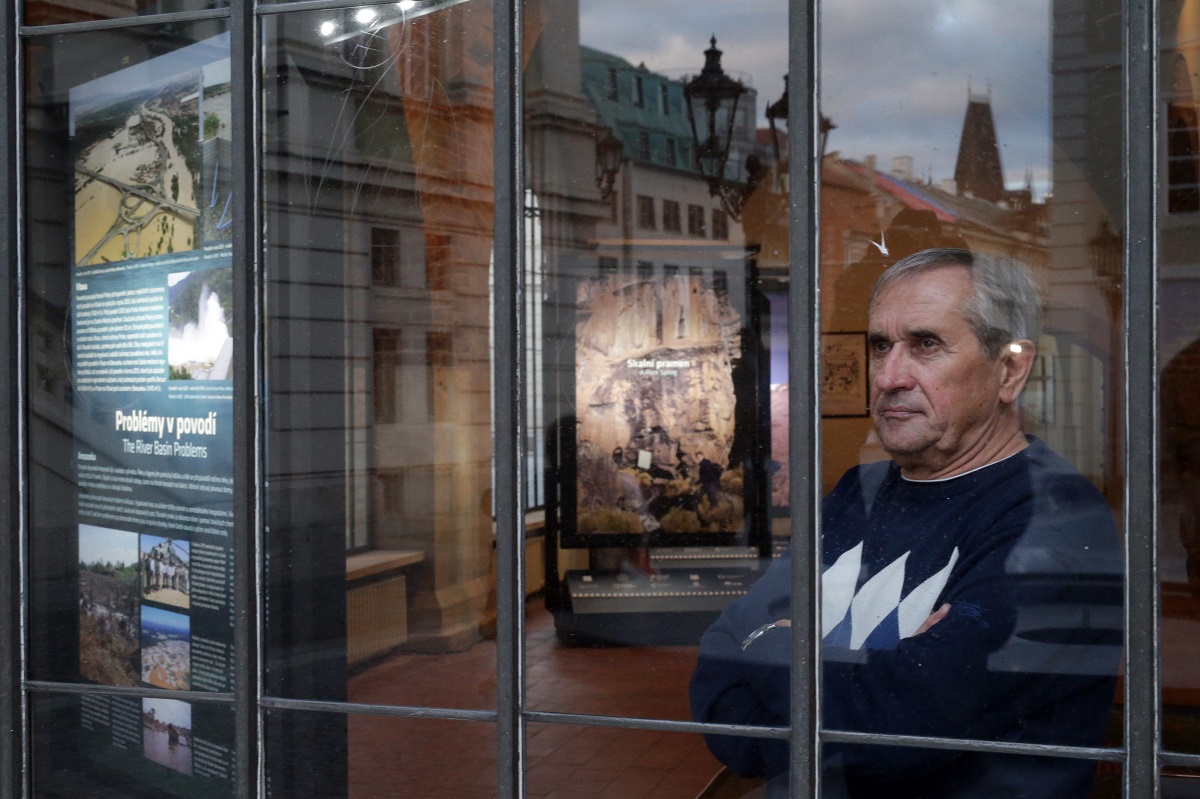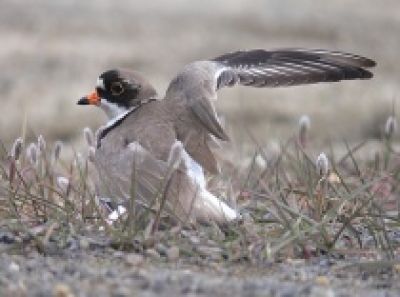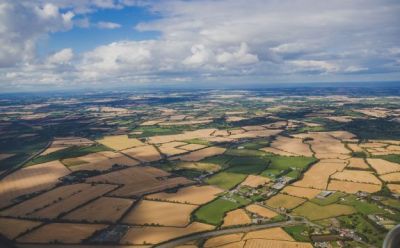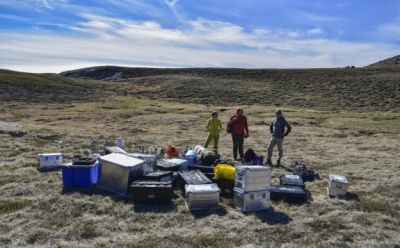In jest, he claims that a recent Amazon exhibition in Prague’s Carolinum came together only by accident, after he came across a box containing Peru’s highest state honour while cleaning up. Back in 2007, Charles University’s Bohumír Janský became the first foreigner to receive the honour, which comes with the aristocratic title of commander. When the renowned hydrologist starts to talk about his work, you can’t help to imagine what it would be like to travel alongside the professor on similar journeys. It seems impossible to do so much in a single lifetime!
How is life these days on our watery planet? And is the colour blue your favourite?
Do you know who exclaimed “The Earth is blue.” It was Yuri Gagarin. He onlz had to orbit the Earth once to see only blue. I start my lectures by asking students if they know why the planet is blue. Of course, they know the answer - “the water.” But once, and it’s been a couple of years now, my son came home from elementary school and proclaimed: “Daddy, I told the teacher that it was because the oceans cover more than 70 percent of the surface, but she claimed that the clouds make the planet blue.” Well, I had to let that one slide to not undercut the [teacher's authority].
Speaking of seas and oceans, is it true that you almost became a member of the board of the Intergovernmental Oceanographic Commission at UNESCO?
We are the only university in the Czech Republic whose Faculty of Science systematically covers oceanography, i.e. the physical and chemical phenomena and processes in the oceans as well as the ecology of marine ecosystems. We don’t have an ocean, but we have several oceanographers. We once wondered why the Czech Republic is not on the Intergovernmental Oceanographic Commission, when most of the oceans’ area is made up of so-called “international waters” and that every landlubber is entitled to them too. And so in 2005 in Paris, at the UNESCO headquarters, we applied for admission in order to defend the interests of landlocked states…
How did things turn out?
On the recommendation of the representatives of the strongest countries on the Oceanographic Commission, I decided a couple of years later to run for the presidency of the prestigious institution. But my plans were thwarted by our then head of state. Before the vote, I heard that representatives of the island nations of Vanuatu and Kiribati shared the views of our former president, who became well known denying climate change or that ocean levels were rising. At the same time, they were asking New Zealand and Australia to provide part of their own territory as compensation for part of the flooded atolls, coral islands and reefs. It’s unfortunate. We could have been there, and I could have been sitting in Paris today among the seven most important people for the world’s oceans (laughs).
You hold the position of president, but elsewhere: the president of the Czech Ibero-American Society.
I took over from the late Jan Kopecký, the former ambassador of the Czech Republic in Argentina, Uruguay, Peru and Bolivia. By the way, this is a territory that our politicians unfortunately pay little attention to. Minister Karel Schwarzenberg quickly closed five embassies in Latin America, even though “Czechoslovakia” still has a huge name in this region and the opportunities for investment there are immense. It’s almost unbelievable how the Andean countries accept us as Czech scientists.
Did the discovery of the sources of the Amazon contribute to how Czech science is viewed?
Definitely. They still greatly appreciate it when someone discovers the source of a stream for them (laughs) - in this case the largest river in the world. Tell me, who in Europe would give you state honours for discovering such a source? In 2007, I was the first foreigner to receive something like that in Peru. If only for that piece of gold they hung around my neck, I have to be active there for the rest of my life.
And are you?
We’d like to participate in the modernisation of the hydrometeorological service there: to complete a network of stations using connections to mobile operators or satellites to gain an overview of the local climate. Since November 2016, we’ve had a prototype station that transmits current data once every four hours to our server via satellite. Until the Americans built a weather station on Mount Everest last year, ours was the highest in the world – at 5,300 meters above sea level. My view is that science can be big business and can become a gateway for our companies. It’s great that geography at the Faculty of Science has been ranked among the 70 best universities in the world, but we must also be involved in applied science and be beneficial to society.
Do we still have things to offer?
Of course. In April 2019 I had the opportunity to travel with a government delegation to South America, and I don’t think it will take much to get us back to where we used to be. Two Czech companies already produce drinking water for indigenous people in the rainforest, where the soil and water were degraded by the mercury used in illegal gold mining. They left behind a hundred thousand hectares of dead rainforest…
Wastewater treatment plants are another possibility for cooperation; around 85 percent of developing countries do not treat their waste. Our companies are able to offer the most advanced technologies because they are among the top in the field in Europe. Here's a temptation: I would like to create a project office under the auspices of Charles University which would launch projects to revitalise water systems as part of its secondary economic activity. It is in the area of water that we could truly flourish.
You’re working on water and drought on several fronts.
Two years ago I was delegated by the university to the National Drought Coalition, where the prime minister and ministers invited academics for the first time: along with me there was Petr Sklenička, the rector of the Czech University of Life Sciences, and Miroslav Trnka of Mendel University in Brno. Our task is to create a vision of how water should be handled. Drought is also the central theme of a six-year grant from the Technology Agency of the Czech Republic, which is dominated by large institutes.
The Faculty of Science is participating in it along with our Faculty of Mathematics and Physics. Students might work with greater gusto knowing that diploma theses will be financially covered thanks to this project (laughs). By the way, drought was also one of the topics of the Česko a jak dál? Public debate series which came from an initiative of Rector Tomáš Zima. It would be great if we were able to educate and train young people as part of these events.
I would like to focus more rigorously on popularising science and to use the activities of the students such as those in the Hydrant student association, who produce interesting videos in the field of surface and groundwater – such as how flows are measured and how snow is examined. I want to spread activities to all channels so that the public knows about us.
At the Department of Physical Geography, you used to have popular lectures on the waterways of the world which were even accompanied by music. Do you still give these?
Of course. When I talk about the Mississippi, Paul Robeson sings Old Man River, and when it comes to the Volga, the song Volga, Volga mať radnája plays. I play The Beautiful Blue Danube by Strauss. And Smetana plays when we see the Vltava River. And I always ask students, ‘do you know what this is?’ Yes, someone always knows Vltava, but almost nobody knows the Volga and Robeson is too old for them too!
And what about Modlitba za vodu (A prayer for water) by Hradišťan?
(Snaps his fingers) That is beautiful! I can already hear it playing in the background of the Amazon exhibition.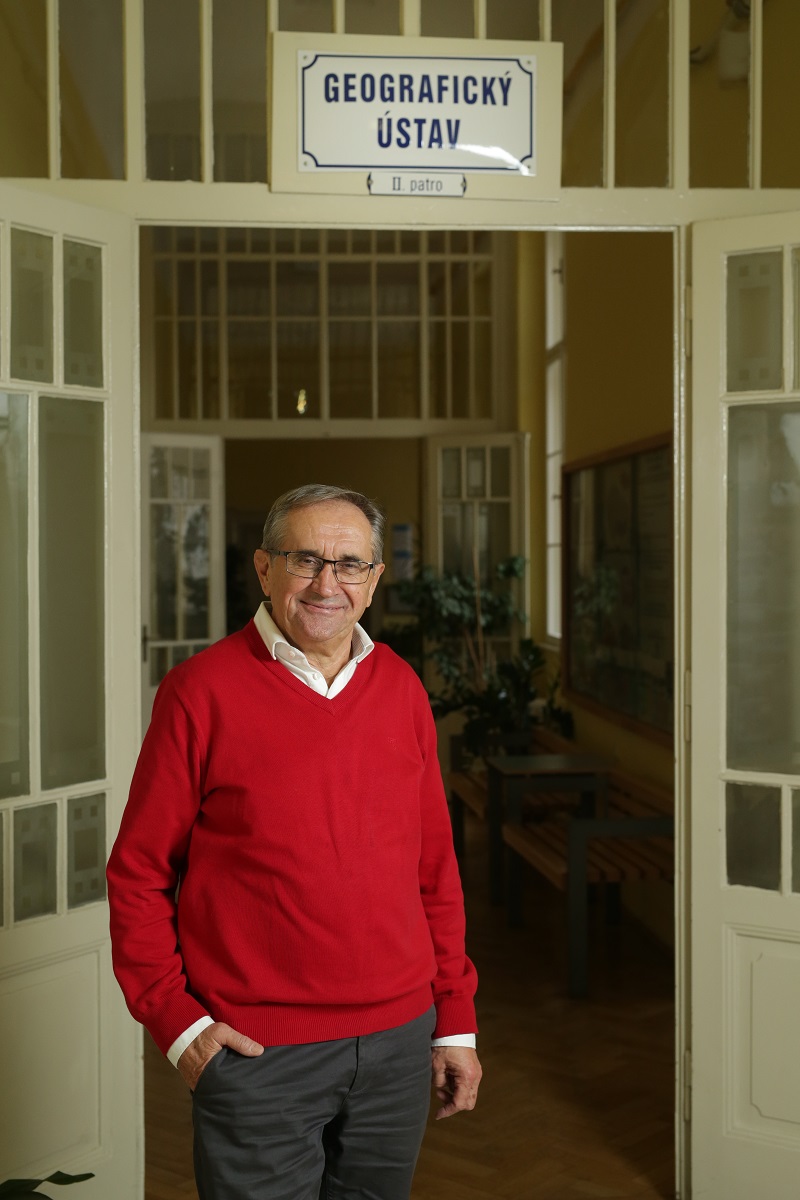
In order for you to stay on top of all these activities, you’ve got to have a great team. How did you put it together?
If there’s anything I’ve been good at in my life, it’s that I’ve been able to surround myself with capable people. I’ve never judged anyone according to the h-index they achieved and I don’t classify students by their test scores; even those with the best grades may have memorised their texts and sometimes they lack logical thinking. I surround myself with enthusiasts. It then makes me happy to see where they get to after a couple of years of study. They include directors of major institutes and international companies. They’re often better than me. And that’s perfectly fine! Teachers should be happy that their students have outgrown them and to have achieved success: these include the director of the Czech Hydrometeorological Institute Mark Rieder, the general manager of Povodí Vltavy Petr Kubala, the director of the Institute for Hydrodynamics at the Czech Academy of Science Martin Pivokonský; the chairman of the board of the Water and Waste Water Company Havlíčkův Brod – Pavel Policar; or Jakub Langhammer, the first professor among my students and the current vice-dean at the Faculty of Science.
You also worked closely with students when you were looking for the sources of the Amazon.
Yes, there were 12 students who travelled with me on the first expedition in 1995, which measured more than 6,000 kilometers and went across all natural regions of Peru. The things we experienced together! Many of them set an altitude record with an ascent at 6,000 metres, we crossed Lake Titicaca from Peru to Bolivia windsurfing, we sailed wild rivers in Amazonia, while sailing through the Manu National Park with indigenous accompaniment we passed predatory caimans, we saw flocks of Ara macaws, and we spent two weeks in absolutely untouched nature in a rainforest, where two as yet uncontacted indigenous groups live… Experiences like these unite you for life. When I meet up with those guys today, they don’t call me anything but “Chief.”
Is there a threat that the Amazon may lose its status as the longest river in the world?
It probably won’t lose its status, but things can change. Now, at a time of climate change, sources are changing as well. There is even a chance that our sources may be longer. We discovered a small lake full of glacial melt water 500 metres up. I would like to try something – to colour the lake with food colouring and see if we can record evidence of the coloured water at the main spring below, at a crack in the rock. Then we could announce that the Amazon has its source at an altitude of 5,550 metres.
Otherwise, we have noticed frequent mentions that the longest river in the world is the Nile in Africa. Perhaps if someone completely independent were to take up the satellite measurement of both rivers [that could change things]… Until then, I claim that “our” Amazon, with a length of 7,062 kilometres, is 300 kilometres longer.
You don’t just explore rivers in the Americas. What interested you about Kyrgystan?
We managed to build a research station there. It is located between glaciers at an altitude of 3,700 metres, and, like the Peruvian one, it has satellite data transmission. Unfortunately, the epidemiological situation is very bad there… Petrov Lake awaits. It’s about as big as Rožmberk Pond [in South Bohemia], and three glaciers flow into it. As the water level rises, there is a risk that a dam there will collapse; there’s a gold mine located below it. If that happened, the infrastructure of the mine would be destroyed, but most importantly the site for storing the cyanide used in mining would be flooded. Toxic substances would destroy life in two reservoirs on the Naryn River and the Syr Darya River and could reach all the way to Uzbekistan.
Now that you’re talking about Asia, Lake Baikal is another fascination. Why?
(Pauses for a moment before answering) In my opinion it is the most beautiful lake in the world. There’s nothing like it! I spent a total of three years there [during the communist period]. For example, as part of an international team of hydrologists for the Limnological Institute of the Siberian Branch of the Russian Academy of Sciences, I measured the flows of all 336 rivers that go into Lake Baikal. I visited hot springs all around the lake’s banks, two glaciers and the oldest national park in Russia. And imagine – it was founded by a Czech – Zenon Francevič Svatoš, from Luž, near Chrudim. There is a huge monument to him there: he saved the black sable from extinction at Baikal in 1911 when he started raising them and returning them to the wild.
I taught at Irkutsk State University and also illegally studied in the university library: with handheld and head-mounted flashlights I searched for traces of the Czechoslovak Legion around Baikal. I wanted my book Baikal – The Pearl of Siberia (1989) to introduce readers both to the deepest lake in the world and the largest reservoir of drinking water in the world, but there was also meant to be part devoted to the Czechoslovak Legion. It took a year for the book to be published, and the chapter on the Legion disappeared [and was cut]. I would like to see it released again, updated and complete.
What did you find out on the topic?
I have notes, for example, on how Admiral Kolčak died. He was both a professor at St. Petersburg University – he did research on a number of polar expeditions – and also the commander in chief of the White Army fighting the Bolsheviks. His bodyguards, made up of elite Czech legionnaires, were led by a Captain Kočí. One night the Bolsheviks attacked them, shot the guards and took the admiral alive to the banks of the frozen Ushakov River, where they cut a hole in the ice and pushed Kolčak into it alive. I have no idea if any historian has had the time since then to look into these events further.
You were also a hunter in the taiga, the boreal forests.
I was put in charge of three students when they dropped us off on an island in an area called Malé moře (Little Sea). The university even equipped us with rifles! They said they’d pick us up in a month… We had to take care of ourselves somehow. I shot a deer, for example; it was hot, and so as not to have the meat go bad, I took it by speedboat to the opposite shore to store it in an ice cave, which we used as a “refrigerator.” And when we got tired of eating fish, I’d bring back some deer. What I experienced on Baikal I’ve never experienced anywhere else: absolute harmony with wild nature.
I was also fishing for omul [Editor’s note: an endemic species of salmon-like fish found only in Lake Baikal] and shook my head in disbelief when I saw the crew bring an entire case of vodka on board for three days. I can still see it in front of me (laughs). They said 25 bottles was just right for four people for three days! And that I’d drive if necessary. I’ll tell you, they drank at every opportunity and toss back one stakan (glass) after another. And because I couldn’t refuse, I’d pour the alcohol over my shoulder into the water when they weren’t looking. On the third day at noon there wasn’t anything else to drink. The men were laying around like corpses. But in order not to spoil the catch, I set out on the way back. I anchored the boat and went to announce to the fish factory that the boat with the fish and the fishermen was waiting to be picked up at the port.
Let’s drop anchor for a moment in the Carolinum in Prague, where the Amazon now “springs.”
Our exhibition is the result of work not only in discovering its sources over three expeditions, but it also shows what we’re doing in Peru now and how we’re trying to research the impact of climate change on nature and civilisation. For thousands of years people in villages have drank water that flowed to them from glaciers. But what will they drink when the glaciers disappear? In the 30 years we’ve been going there, the glaciers in the headwaters of the Amazon at the northern foot of the Cordillera Chila have disappeared completely. And it’s no different in many other places among the great mountains of the world.
What can be done?
This opens up opportunities for developed nations and their assistance. We participated in the design of a dam at 4,100 meters above sea level that will connect to terrace fields in the Colca canyon that were built in the 12th century. These are effects that must be taken deadly seriously. If we don’t do something today, it might be too late. Even in our homeland, the supply of drinking water is a serious problem. Once the Covid-19 epidemic ends, we will have to come back to water as an important topic. Fortunately, the government now has a capable minister, a graduate of the Faculty of Science, who has been very active on issues related to water. He was the one who created the “rainwater” project!
You’ve devoted an exhibition to the Queen of Rivers, and you’re preparing a tribute to a lake that holds a special place in your heart in the spring…
(Slightly nostalgic) Mladotice Lake! It is the only one in the Czech Republic, and even in all of Central Europe, to have been formed by a landslide. At the time, in 1872, the largest flood in history took place in the Berounka river basin, claiming 300 victims. More than 30 hectares of slope dammed up the valley. I myself wrote more than 30 articles on it; news of the lake even appeared in a number of international magazines. As soon as the Amazon exhibition ends, I’ll start building an educational trail leading around Mladotice Lake. I’m looking forward to being able to go around all the stops with the mayor and people from the surrounding villages at the opening accompanied by a local polka band and ending up in a pig slaughter and feast at the local agricultural cooperative (smiles).
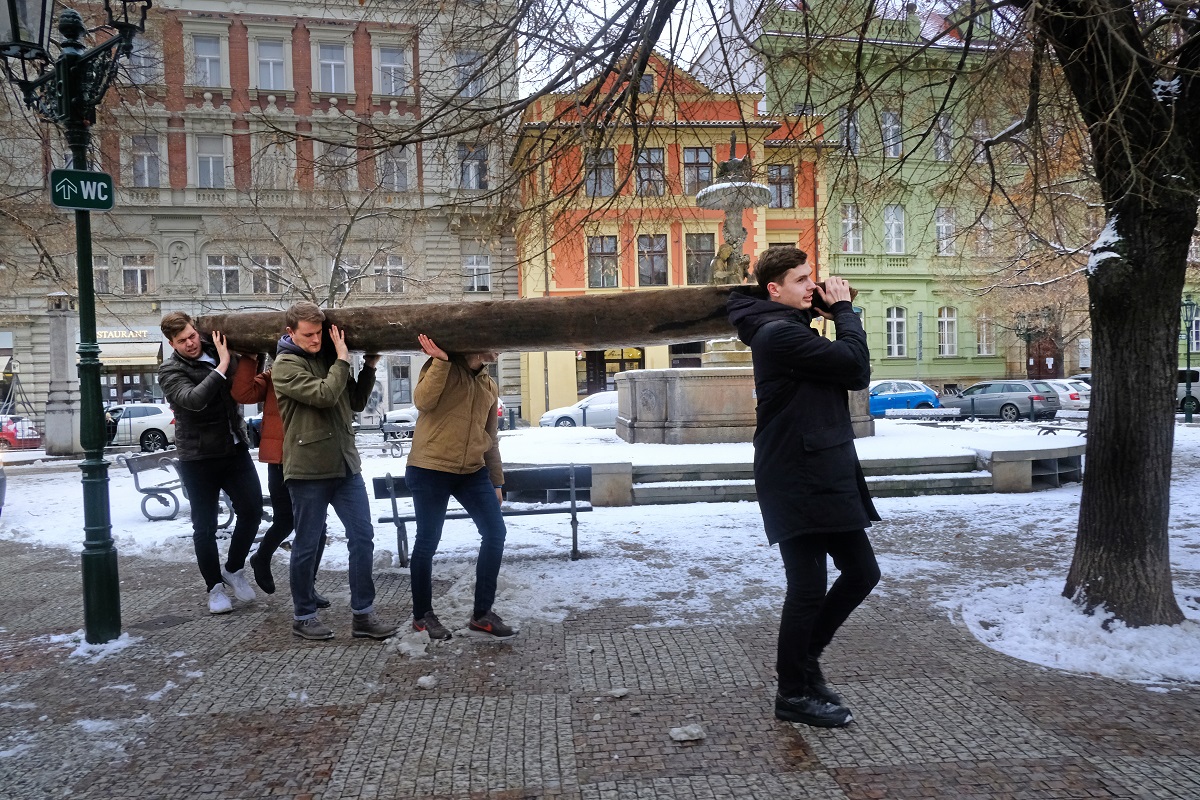
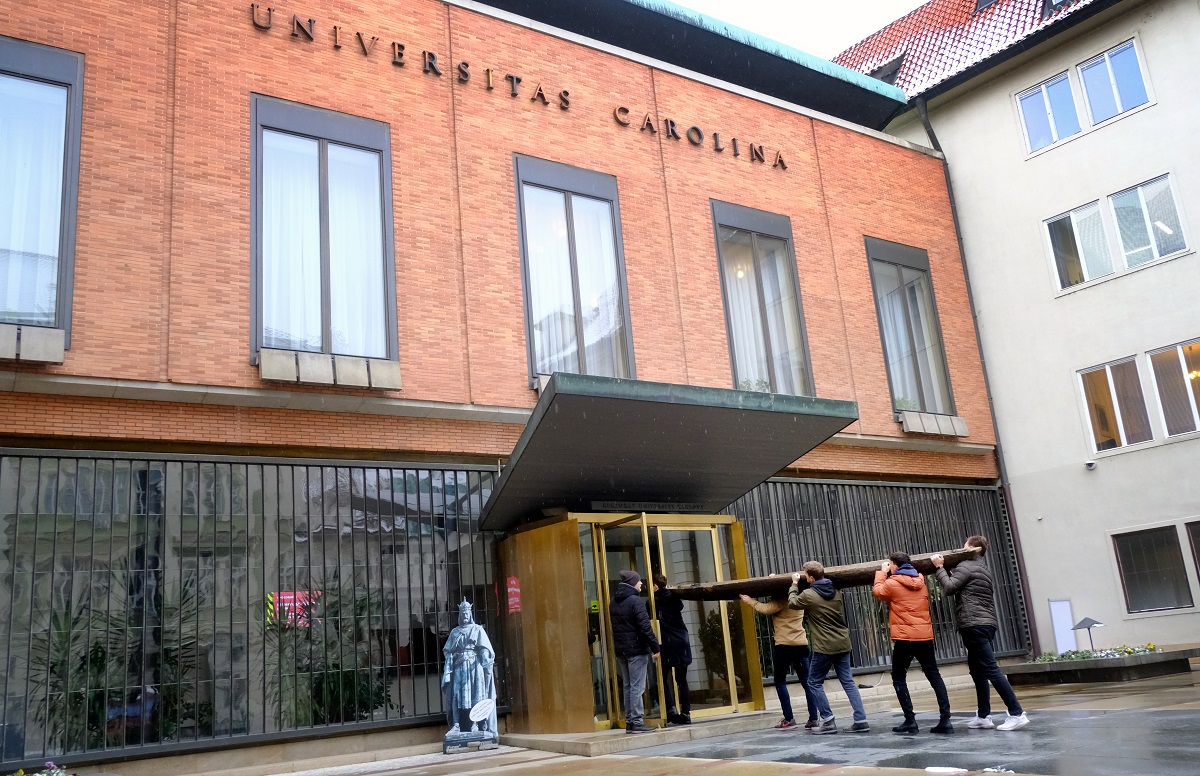
One of the centrepieces of the Amazon exhibition at the Carolinum - from the Náprstek Museum of Asian, African and American Cultures.
| Professor Bohumír Janský |
|
Bohumír Janský teaches at the Department of Physical Geography and Geoecology at the Faculty of Science at Charles University. After studying geography, he remained at Prague’s “natural sciences” faculty. The topic of his diploma thesis was Mladotice (Odlezly) Lake, which he is still focused on today. Peru was the destination of his expeditions on three occasions, the first in 1995. As part of the Hatun Mayu 1999 and Hatun Mayu 2000 expeditions (‘Hatun Mayu’ means ‘Big River’ in Quechua), he set out for the Andes looking for the Amazon. He and his team proved that the Amazon does not have a single source, but has an area of sources on the northern foot of the Cordillera Chila mountains. Recent research has confirmed the Carhuasanta River as the main source of the Amazon. The Peruvian government awarded him a gold medal of distinction and a title of nobility for his research into the sources of the Amazon River and his activities at universities there. On the occasion of Professor Janský’s milestone birthday, the Amazon exhibition opened in January 2021. It maps out the 20 years since the discovery of the sources of the Amazon by a Czech expedition. Bohumír Janský is the exhibition’s author and curator. |


